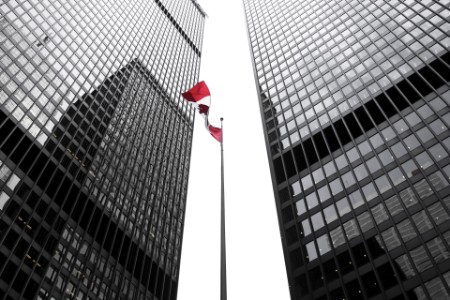
Finance releases legislative proposals on extension to incur flow-through share expenditures
Tax Alert No. 63, 17 December 2020
On 16 December 2020, the Department of Finance released draft legislative proposals to implement the previously announced measures aimed at extending the timelines for resource corporations to incur eligible expenses by 12 months. The legislative proposals follow on from the Department’s 10 July 2020 announcement concerning the flow-through share rules in order to alleviate the challenges faced by exploration companies in the mining industry amid the COVID-19 pandemic. Further details of the July 10, 2020 announcement can be found in our previous Tax Alert 2020 Issue No. 43. The proposals mean that resource companies who have issued flow-through shares would be allowed additional time to incur eligible expenses.
Generally speaking, a resource company issues flow-through shares to obtain financing for exploration and development by offering investors the opportunity to obtain the benefit of tax deductions associated with exploration and development expenditures. The flow-through share rules allow a resource company and an investor to enter into an arrangement whereby the corporation issues shares to the investor and agrees, in writing, to incur and renounce the qualifying expenditures in the amount of share subscription proceeds within a legislated time frame.
There are two sets of rules that use different reference periods for the qualifying expenditures – these are known as the general rule and the look-back rule. Under the general rule, a corporation must incur the qualifying expenditures within 24 months after the end of the month in which the agreement was entered into. Under the look-back rule, the corporation must incur the qualifying expenditures by the end of the calendar year following the year in which the agreement was entered into. Where the look-back rule applies, the issuer is subject to a special tax under Part XII.6 tax on any funds that are unspent on qualifying expenditures (unexpended amount) at the end of each month starting from February to December of the following year. In addition, a 10% penalty tax applies on any unexpended amount if the corporation fails to incur sufficient qualifying expenditures. As well, the tax liability of the investor is adjusted.
The proposed changes are as outlined below:
- Extension of the timeline to incur qualifying expenditures by 12 months under the general rules for flow-through share agreements that were entered into on or after 1 March 2018 and before 2021. The corporation now has 36 months as opposed to 24 months to incur and renounce the expenses.
- Extension of the timeline to incur qualifying expenditures by 12 months under the look-back rules for flow-through share agreements that were entered into in 2019 or 2020. As a result of the extension, the corporation will have until 31 December 2021 versus 31 December 2020 for a flow-through share agreement entered into in 2019 and renounced by 31 December 2019.
- Relief provided in respect of Part XII.6 tax for flow-through share agreements entered into in 2019 and 2020 under the look-back rules. For Part XII.6 tax, new deeming provisions will apply such that the qualifying expenditures are treated as incurred up to one year earlier than the date they are actually incurred. The provisions will also provide a reduction to the Part XII.6 tax that would otherwise be payable. For example, for agreements entered into in 2019, all qualifying expenditures incurred in 2020 (the normal look-back year) will be deemed to have been incurred in January 2020. Since Part XII.6 tax does not apply to amounts expended in January of the normal look-back year, the result is that any amounts expended in the normal look-back year will be exempt from Part XII.6 tax. Qualifying expenditures incurred in the year following the normal look-back year will be deemed to be incurred 12 months earlier than they are actually incurred. Using the above example, qualifying expenses incurred in 2021 will be deemed to be incurred 12 months earlier for purposes of determining the Part XII.6 tax liability.
- In addition, the filing and payment deadline in respect of Part XII.6 tax is extended by one year.
- Where the resource company fails to meet the extended deadline, the additional 10% penalty tax under Part XII.6 would apply and the tax payable of investors would be adjusted accordingly. Accordingly, if the amounts are not actually expended by the end of 2021 (where the agreement was entered into in 2019) or 2022 (where the agreement was entered into in 2020), the additional 10% penalty tax would apply.
These proposals are a welcome relief for resource corporations that had issued or are planning to issue flow-through shares in 2019 or 2020. In particular, corporations using the look-back rules may be able to eliminate their Part XII.6 obligation for agreements entered into in 2019 or 2020 if all qualifying expenses under the flow-through agreement are incurred in the immediately following year.
However, it will be important for any resource corporations that will rely on these extended timelines to ensure that a review is undertaken of the terms and conditions of any flow-through agreements to determine whether any amendments are required to accommodate the revised timelines, as the agreements commonly specify the dates by which qualifying expenditures should be incurred.
Learn more
For more information, contact your EY or EY Law tax advisor, or one of the following professionals.
West
Michael Sabatino – Mining & Metals Tax Leader
+1 604 891 8448 | michael.sabatino@ca.ey.com
David Pope
+1 403 206 5468 | david.pope@ca.ey.com
Central
Lee Boswell
+1 416 941 1807 | lee.j.boswell@ca.ey.com
East
André Lortie
+1 514 879 6686 | andre.lortie@ca.ey.com
Budget information: For up-to-date information on the federal, provincial and territorial budgets, visit ey.com/ca/Budget.

